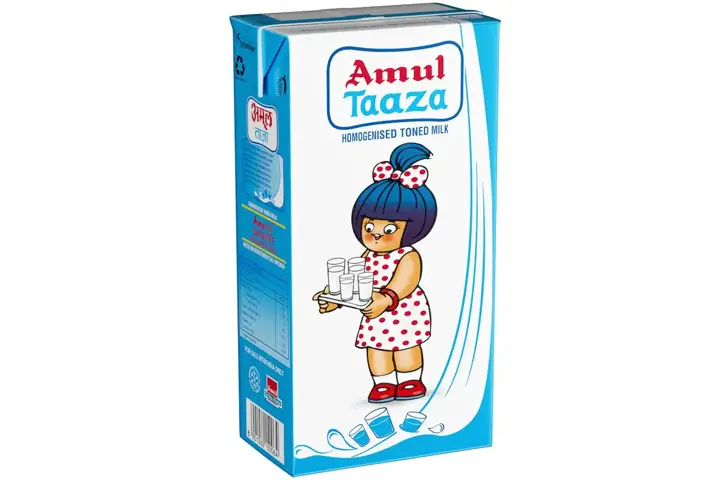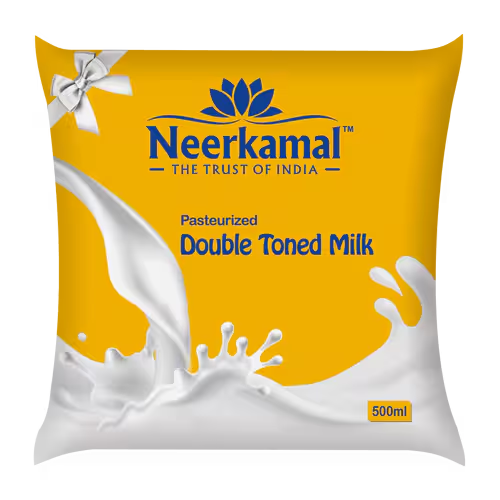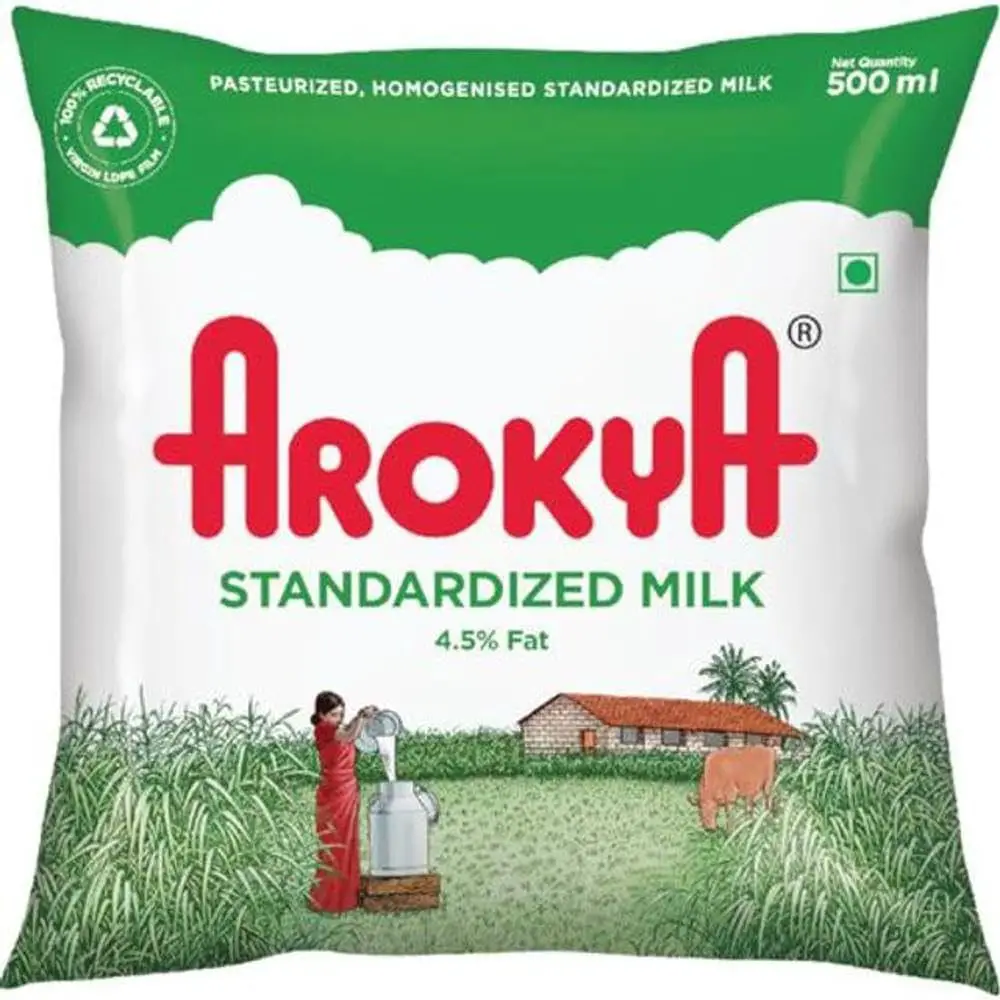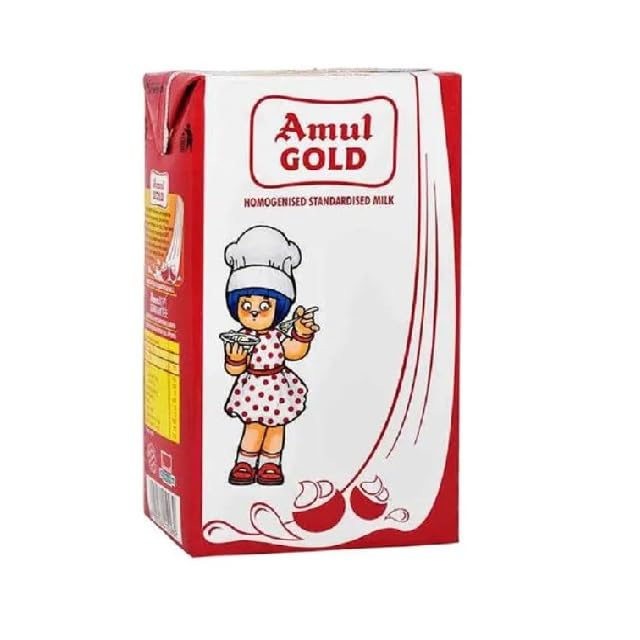Here, we discuss 12 different types of milk. It could be of cows, buffaloes, or bovine milk.
We are categorizing milk based on constituents, flavors, heat treatment, nature, etc.
1. Based on Nutritional constituent
1. Skim Milk
Skim milk, also known as fat-free or non-fat milk, is a popular choice for people looking to reduce their calorie and fat intake. Unlike whole milk, which contains around 3.5% fat, skim milk has almost all the fat removed. This process makes it a lighter option, ideal for those who are watching their weight or trying to cut down on fats.

Despite the removal of fat, skim milk still retains most of the essential nutrients found in regular milk. It’s rich in protein, calcium, vitamin D, and other important vitamins and minerals. This makes it a good option for those who want to maintain a balanced diet without consuming extra calories from fat.
One common misconception about skim milk is that it doesn’t taste as good as whole milk. While it may not have the creamy texture of whole milk, many people enjoy its lighter taste, and it’s great in smoothies, cereals, or just as a refreshing drink.
For those who are lactose intolerant or prefer plant-based alternatives, skim milk might not be the best option. However, for individuals looking to cut fat without sacrificing nutrition, skim milk can be a healthy and satisfying choice. It’s a simple swap that can make a big difference in your daily calorie intake without compromising on essential nutrients.
2. Toned Milk
Toned milk is a popular choice for those who enjoy dairy but want to cut down on fat. Originating in India, toned milk is made by adding skimmed milk powder and water to whole milk. This process reduces the fat content without affecting the essential nutrients. The result is a lighter version of milk that’s still rich in protein, calcium, and other vitamins, making it a healthy option for daily consumption.

One of the main benefits of toned milk is its lower calorie content compared to full-fat milk. This makes it a good choice for people who are looking to manage their weight or reduce their fat intake. While it has less fat, toned milk still provides all the goodness of regular milk, including vitamins like B12, D, and calcium, which are important for bone health and immune support.
Toned milk is also easily digestible, which is especially helpful for those who may experience bloating or stomach discomfort with heavier milk options. Its lighter texture makes it versatile for use in tea, coffee, cooking, and even smoothies.
For families and health-conscious individuals, toned milk is an affordable and nutritious way to enjoy the benefits of dairy. It’s a practical choice that supports a balanced diet without sacrificing taste or essential nutrients, making it a popular choice in households worldwide.
3. Double Toned Milk
Double-toned milk is a popular choice for those seeking a healthier, low-fat milk option. Made by adding skimmed milk powder to whole milk, double-toned milk has a reduced fat content, usually around 1.5% to 1.8%. This makes it a great alternative for people watching their calorie intake or looking to manage cholesterol levels, while still providing essential nutrients like protein, calcium, and vitamins.

One of the main benefits of double-toned milk is that it retains the nutrients found in regular milk but with less fat. It is ideal for those on a diet or anyone who wants to enjoy milk without feeling too heavy. The lower fat content makes it easier to digest than whole milk, yet it still maintains a creamy texture that’s suitable for tea, coffee, smoothies, or cereals.
Double-toned milk is also fortified with essential vitamins like vitamins A and D, which play a vital role in bone health and immunity. While it doesn’t offer the same richness as full-fat milk, double-toned milk is widely used in households and recommended by nutritionists for balanced diets.
For those aiming for a healthier lifestyle without compromising on taste, double-toned milk is an excellent choice. It provides most of the health benefits of whole milk in a lighter form, making it a smart option for daily consumption.
4. Full Cream Milk
Full cream milk, often called whole milk, is milk in its purest form, containing all the natural fat and nutrients found in milk. With a rich, creamy texture and mildly sweet taste, it’s a popular choice for people who want more flavor and nutrition in their dairy.
One of the key benefits of full cream milk is its high content of healthy fats. Unlike skimmed or low-fat milk, full cream milk retains about 3.5-4% fat. These fats are important for maintaining energy, helping to absorb fat-soluble vitamins like A, D, E, and K, and adding to a feeling of fullness after drinking.

Full cream milk is also rich in essential nutrients such as calcium, which supports strong bones and teeth. It’s packed with protein, which is vital for muscle repair and growth, making it a great option for active individuals. Additionally, full cream milk contains B vitamins that help with energy production and nervous system health.
However, while it’s nutritionally dense, it also has more calories than low-fat options, so it’s best to enjoy it in moderation, especially for those watching their calorie intake.
Overall, full cream milk is a wholesome and natural dairy choice for anyone looking to add a creamy richness to their diet while benefiting from the many essential nutrients milk offers.
5. Standardized Milk
Standardized milk is milk that’s been adjusted to a specific fat content, typically 4.5%, making it a popular choice for everyday use. This milk is created by combining different types of milk – such as skimmed milk and cream – to reach a consistent fat level. This process ensures that every glass of milk has the same quality and taste, making it a preferred option for households.

Why is standardized milk important? The key benefit lies in its uniformity. When milk comes directly from cows, the fat content can vary depending on the cow’s breed, diet, and even the season. Standardization helps maintain the same fat level, so consumers always know what to expect. It’s especially useful for recipes where precise measurements are needed, like baking or cooking.
Standardized milk is nutritious and retains essential nutrients like calcium, proteins, and vitamins. This milk is suitable for people of all ages, providing a good source of daily nutrients without any surprises in taste or quality. It’s ideal for drinking, adding to tea or coffee, and using in cooking and baking.
Overall, standardized milk is a convenient, consistent, and nutritious choice for families. By adjusting the fat content, milk processors ensure a reliable product that meets consumers’ needs and simplifies daily cooking.
6. Homogenized Milk
Homogenized milk is a common type of milk that undergoes a special process to improve its quality and consistency. The homogenization process involves breaking down fat molecules in the milk into smaller sizes. This prevents the cream from separating and rising to the top, resulting in a smooth and uniform texture.
One of the main benefits of homogenized milk is its extended shelf life. Because the fat is evenly distributed, it reduces the likelihood of spoilage. Additionally, homogenized milk is often creamier and has a more appealing mouthfeel, making it a favorite choice for many consumers.

In terms of nutrition, homogenized milk retains all the essential nutrients found in regular milk, including calcium, protein, and vitamins A and D. The homogenization process does not alter these nutritional components, ensuring that you receive the same health benefits.
Homogenized milk comes in various fat levels, such as whole, 2%, and skim, allowing consumers to choose according to their dietary preferences. Whether enjoyed in a glass, used in cooking, or added to coffee, homogenized milk is versatile and widely available.
In conclusion, homogenized milk is an important staple in many households, known for its smooth texture, longer shelf life, and nutritional benefits. Next time you pour a glass, you’ll know a bit more about the science behind it!
2. Based on heat treatment
1. Pasteurized Milk
Pasteurized milk has been heat-treated to kill harmful bacteria, making it safer to consume. The pasteurization process involves heating milk to a specific temperature, typically around 161°F (72°C), for about 15 seconds and then quickly cooling it down. This process destroys pathogens like Salmonella, Listeria, and E. coli without compromising the milk’s nutritional value.
One major benefit of pasteurized milk is its extended shelf life compared to raw milk. While raw milk can spoil within a few days, pasteurized milk can last up to a week or longer when refrigerated. The pasteurization process doesn’t significantly impact essential nutrients, such as protein, calcium, and vitamins A and D, which makes pasteurized milk a nutritious choice.
For those concerned about the flavor, pasteurization maintains the fresh taste of milk, although some individuals may notice a slight difference compared to raw milk. Pasteurized milk is also versatile—it can be used in cooking, baking, and as a refreshing drink.
Countries around the world, including the United States and the United Kingdom, have strict regulations on milk pasteurization to ensure public health. The World Health Organization and the Centers for Disease Control and Prevention both recommend consuming pasteurized milk to avoid foodborne illnesses.
Choosing pasteurized milk is a simple step towards healthier eating, providing a safe and nutritious option that benefits all ages.
2. Sterilized Milk
Sterilized milk is a type of milk that has been treated at high temperatures to kill harmful bacteria, making it safer and extending its shelf life. This milk undergoes a process called sterilization, where it is heated to around 110–120°C for 10–30 minutes. This high-heat treatment kills both bacteria and enzymes that could cause spoilage, meaning sterilized milk can be stored unopened for up to six months without refrigeration.
Unlike pasteurized milk, which is heated to lower temperatures, sterilized milk has a longer shelf life and is less likely to spoil quickly. However, the high temperatures used during sterilization may slightly alter the taste, giving it a “cooked” flavor that some people notice. Another technical point is that sterilized milk loses some nutrients during heating, including small amounts of vitamins B and C. Despite this, it remains a nutritious choice, especially in areas where fresh milk storage is difficult.
In addition to its long shelf life, sterilized milk is versatile. It can be used in cooking, baking, and direct consumption. Because it is free of pathogens, it’s also safe for people with weaker immune systems. With the convenience of room temperature storage and its safety benefits, sterilized milk has become a popular choice worldwide. Whether used as a daily drink or in recipes, sterilized milk offers a convenient, long-lasting option for households and food services alike.
3. UHT Milk
UHT milk, or Ultra-High Temperature milk, is a popular choice worldwide due to its extended shelf life and convenience. The term “UHT” refers to the process used to heat the milk to a temperature of about 135°C (275°F) for just 2-5 seconds. This rapid heating kills harmful bacteria and microorganisms that could cause spoilage. Unlike regular milk, which requires refrigeration and spoils within a week, UHT milk can last for several months without refrigeration as long as it’s unopened.
The unique packaging of UHT milk also plays a role in its longevity. UHT milk is usually packed in aseptic, sterile cartons, protecting it from air and light, which further helps preserve the milk’s freshness and nutritional content. However, once opened, UHT milk should be refrigerated and consumed within a week, similar to regular milk.

Nutritionally, UHT milk retains most of the essential nutrients found in fresh milk, such as calcium, protein, and vitamins. There might be a slight loss of some heat-sensitive vitamins like Vitamin C and B12, but these changes are minimal.
One of the major advantages of UHT milk is its accessibility, especially in areas with limited refrigeration facilities. It’s a convenient option for those with busy lifestyles, as it doesn’t require daily trips to the store. Overall, UHT milk offers a practical solution for milk preservation while maintaining safety and nutrition, making it a valuable choice for many households globally.
3. Based on drying
1. Powdered Milk
Powdered milk, also known as dried milk, is a popular dairy product made by evaporating milk to remove its moisture. This process creates a fine powder, which can be stored for a long time without spoiling, unlike fresh milk. Powdered milk retains most of the nutrients found in liquid milk, such as protein, calcium, and essential vitamins, making it a nutritious alternative.

One of the key advantages of powdered milk is its extended shelf life. Stored properly, it can last from 6 months to a couple of years, depending on the type. This makes it a convenient option for emergency supplies, travel, or regions with limited refrigeration. Rehydrating powdered milk is easy—simply add water, and it can be used in the same way as fresh milk. It’s also versatile in cooking and baking, adding richness to recipes like pancakes, bread, and desserts.
Nutritionally, powdered milk offers a similar profile to regular milk. It contains around 26 grams of protein and 38 grams of carbohydrates per 100 grams, along with a good supply of vitamins like A, D, and B12. There are various types, including whole, non-fat, and skimmed powdered milk, catering to different dietary preferences.
In short, powdered milk combines convenience with nutrition, making it a valuable addition to kitchens around the world. It’s a reliable, affordable way to enjoy the benefits of milk whenever needed.
4. Others
1. Flavoured Milk
Flavoured milk is a popular drink that combines milk with sweeteners and flavorings to create a tasty beverage enjoyed by children and adults alike. Common flavors include chocolate, strawberry, vanilla, and banana, and each offers a unique twist to the traditional taste of milk.
Nutritionally, flavoured milk provides essential nutrients similar to plain milk. It’s a good source of calcium, which supports strong bones and teeth, and contains proteins needed for muscle growth and repair. Additionally, it includes important vitamins such as vitamin D and vitamin B12, which contribute to energy and immunity.
One technical aspect of flavoured milk is its fat content, which varies depending on the type. Flavoured milk can be low-fat, skimmed, or whole, allowing consumers to choose based on their dietary needs. A typical 240 ml (8 oz) serving of chocolate-flavoured milk, for example, provides around 150-200 calories, depending on the fat content and added sugars.
While it’s delicious, flavoured milk should be consumed in moderation due to the added sugars. Some flavoured milk products contain as much as 10-15 grams of sugar per serving, which can add up if consumed frequently. As an alternative, some brands offer low-sugar or sugar-free options for those mindful of sugar intake.
Overall, flavoured milk is a delightful way to enjoy the benefits of milk with a hint of extra flavor, making it a great addition to a balanced diet.
2. Mixed Milk
Mixed milk, often created by combining two or more types of milk (like cow, goat, or buffalo milk), is gaining popularity for its unique blend of taste, nutrition, and health benefits. This approach combines the nutritional strengths of each milk type to create a product rich in vitamins, minerals, and protein.
One of the primary benefits of mixed milk is its balanced nutrient profile. For instance, cow’s milk is known for its high calcium content, which is essential for strong bones, while goat’s milk is rich in essential fatty acids, which aid in digestion and improve skin health. By mixing these, you get the benefits of both. Similarly, buffalo milk, which has a higher fat content, can add creaminess and extra calories, ideal for those needing a higher-energy diet.
A technical point to consider is the fat percentage in mixed milk, which can range from 3-6%, depending on the milk types used. This can be adjusted by varying the proportion of each milk type, making it suitable for both low-fat and full-fat diets.
In addition, mixed milk often has a better balance of lactose, making it easier to digest for some people. The protein content in mixed milk is also notably higher, supporting muscle growth and repair. Whether you’re looking for a nutritional boost or simply enjoying the taste, mixed milk provides a wholesome option that combines the benefits of multiple milk types into a single glass.
3. Recombined Milk
Recombined milk is a type of milk created by blending milk powder, water, and sometimes other ingredients like fats and proteins. This process helps produce a product that closely resembles fresh milk but is often more cost-effective and easier to transport.
The primary ingredients in recombined milk include milk powder, which is made by evaporating fresh milk until only the solid components remain. This powder can be stored for long periods without refrigeration, making it a practical choice for manufacturers. When making recombined milk, the milk powder is mixed with water, and additional fat and protein may be added to achieve the desired taste and consistency.
One of the key benefits of recombined milk is its versatility. It can be used in various products, including cheese, yogurt, and baked goods. This type of milk can also cater to different dietary needs by adjusting the fat content and adding vitamins and minerals.
It’s important to note that recombined milk is often fortified with essential nutrients, ensuring that it provides similar health benefits to fresh milk. The nutritional profile of recombined milk can vary, depending on the formulation and the quality of the ingredients used.
In summary, recombined milk is a practical and economical alternative to fresh milk, providing similar taste and nutrition while being easier to store and transport.
4. Raw Milk
Raw milk comes directly from cows, goats, or sheep without undergoing pasteurization. Pasteurization is a process that heats milk to kill harmful bacteria, but some people believe that raw milk has unique benefits that are lost during this process.
One of the main appeals of raw milk is its taste. Many enthusiasts describe it as creamier and richer than processed milk. This natural flavor comes from the presence of beneficial bacteria, enzymes, and nutrients that might be diminished when milk is pasteurized.

Nutritionally, raw milk is a good source of calcium, protein, and vitamins like B12. It also contains beneficial fatty acids that support heart health. Proponents argue that these nutrients are more bioavailable, meaning they are easier for our bodies to absorb in their natural form.
However, it’s important to note that raw milk can carry risks. Since it hasn’t been pasteurized, it can harbor harmful bacteria like Salmonella and E. coli, which can cause serious illness. Because of this, the sale of raw milk is regulated in many areas, and it’s essential to source it from trusted farms that maintain high hygiene standards.
In summary, raw milk is celebrated for its taste and potential health benefits, but it comes with risks. If you’re considering trying raw milk, make sure to weigh the benefits against the safety concerns.
